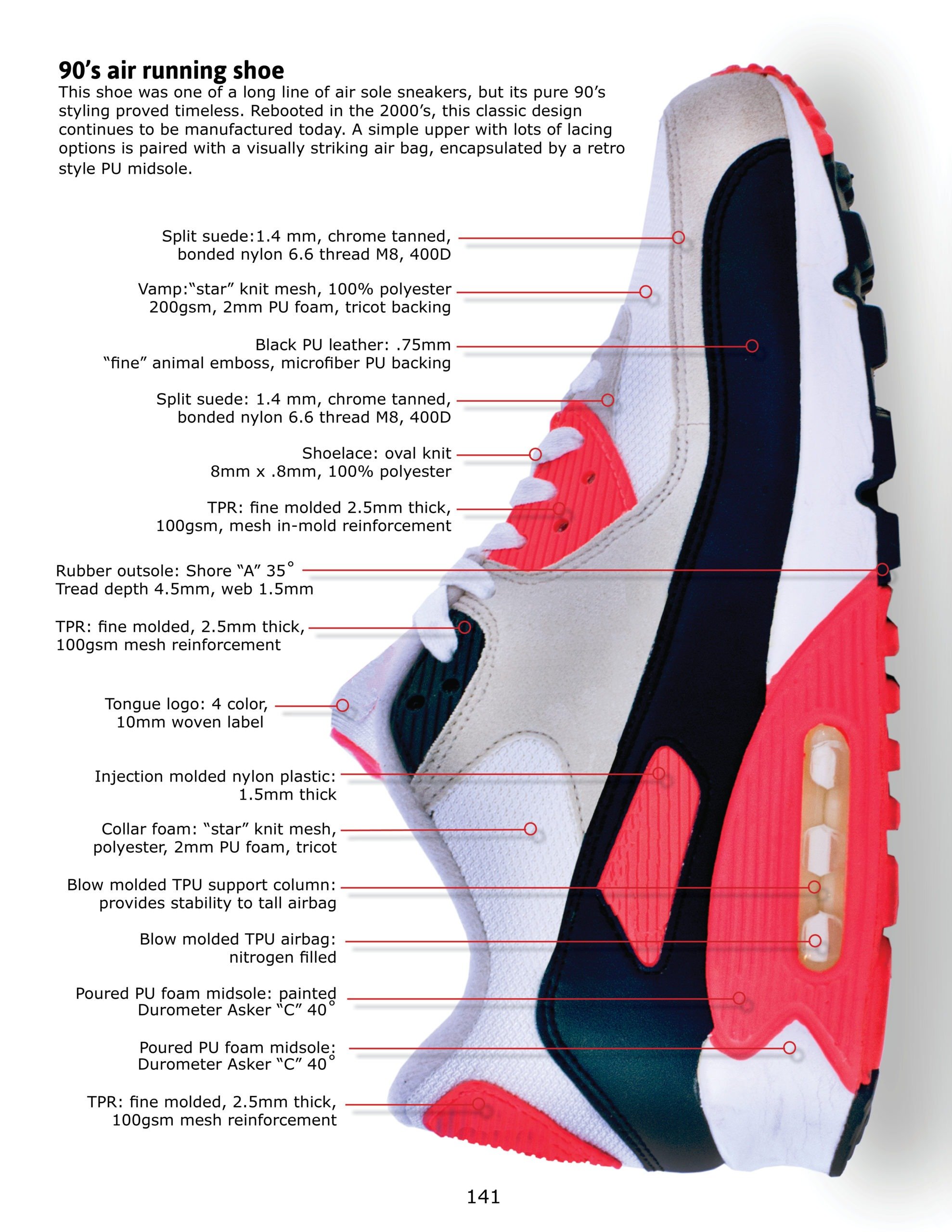Shoes are made in countries all over the world, with production concentrated in Asia, but also significant in Europe and the Americas. The specific shoe factory locations depend on factors like labor costs, material availability, and trade agreements. This article will delve into the shoe industry geography, exploring the key shoe manufacturing locations and the reasons behind their prominence in global shoe production. We will discuss which countries produce shoes, and act as important shoe manufacturing hubs, providing crucial shoe sourcing locations for brands worldwide.

Image Source: shoemakersacademy.com
The Global Footprint of Footwear: A Broad Overview
The footwear origin is diverse, reflecting a long history of shoe production in various regions. However, the modern shoe industry is characterized by a globalized supply chain with manufacturing spread across numerous countries.
Why Geography Matters in Shoe Production
Several factors influence where are shoes manufactured:
- Labor Costs: Countries with lower labor costs often attract shoe manufacturers seeking to reduce expenses.
- Material Availability: Proximity to raw materials like leather, rubber, and textiles can significantly impact production costs and efficiency.
- Infrastructure: Adequate transportation networks (ports, roads, railways) are essential for efficient import of materials and export of finished products.
- Trade Agreements: Favorable trade agreements can reduce tariffs and other trade barriers, making certain countries more attractive for manufacturing.
- Skilled Labor: Access to a skilled workforce with experience in shoe manufacturing is crucial for producing high-quality footwear.
- Government Policies: Government incentives and policies can encourage or discourage shoe manufacturing in a particular country.
Asia: The Dominant Force in Shoe Manufacturing
Asia is the undisputed leader in global shoe production, accounting for a significant share of the world’s footwear manufacturing. Several countries in Asia have emerged as major shoe manufacturing hubs.
China: The Giant of Shoe Production
China is the world’s largest shoe production country. The reasons are numerous:
- Scale of Production: China boasts a massive manufacturing infrastructure capable of producing vast quantities of shoes.
- Low Labor Costs (Historically): While labor costs have risen in recent years, they remain relatively competitive compared to developed countries.
- Complete Supply Chain: China has a fully integrated supply chain for shoe manufacturing, from raw materials to finished products.
- Established Expertise: Decades of experience in shoe manufacturing have resulted in a highly skilled workforce.
However, changes are afoot. Rising labor costs in China are prompting some manufacturers to explore alternative shoe sourcing locations in other Asian countries.
Vietnam: A Rising Star in Footwear
Vietnam has become a major player in the shoe industry geography, attracting significant investment in recent years. Factors contributing to Vietnam’s growth include:
- Lower Labor Costs: Vietnam offers significantly lower labor costs compared to China, making it an attractive alternative for manufacturers.
- Favorable Trade Agreements: Vietnam has several free trade agreements with major markets, reducing trade barriers.
- Growing Manufacturing Sector: Vietnam’s manufacturing sector is rapidly expanding, with a focus on export-oriented industries like footwear.
India: A Country with Untapped Potential
India has a large and growing footwear industry, with significant potential for further expansion. Advantages include:
- Large Domestic Market: India has a massive domestic market for shoes, providing a strong base for local manufacturers.
- Abundant Raw Materials: India is a major producer of leather, a key raw material for shoe manufacturing.
- Low Labor Costs: Labor costs in India are among the lowest in the world.
Challenges remain, including infrastructure limitations and bureaucratic hurdles.
Other Asian Countries: Diverse Players
Other Asian countries also play a role in shoe manufacturing locations, including:
- Indonesia: A significant producer of athletic shoes and other types of footwear.
- Thailand: Known for its production of rubber and other materials used in shoe manufacturing.
- Cambodia: Attracting increasing investment in garment and footwear manufacturing.
Europe: Quality and Tradition
While Asia dominates in terms of volume, Europe remains a significant player in the global shoe production, particularly for high-end and specialized footwear.
Italy: The Epitome of Luxury Footwear
Italy is renowned for its high-quality leather shoes and luxury brands. Key features of Italian shoe manufacturing include:
- Craftsmanship: Italian shoemakers are known for their traditional craftsmanship and attention to detail.
- High-Quality Materials: Italian shoes are typically made from the finest leathers and other materials.
- Brand Reputation: Italian brands have a strong reputation for quality and style.
Portugal: A Growing Force in European Footwear
Portugal has emerged as a significant shoe manufacturing hub in Europe, offering a combination of quality and competitive pricing.
- Skilled Workforce: Portugal has a skilled workforce with experience in shoe manufacturing.
- Competitive Costs: Portugal offers lower labor costs compared to other Western European countries.
- Focus on Sustainability: Portuguese manufacturers are increasingly focused on sustainable production practices.
Spain: A Tradition of Leather Footwear
Spain has a long tradition of leather footwear manufacturing, particularly in regions like Alicante and La Rioja.
- Leather Expertise: Spanish manufacturers have expertise in working with leather and other natural materials.
- Design and Innovation: Spain is known for its innovative shoe designs.
- Focus on Comfort: Spanish shoes are often designed for comfort and practicality.
Other European Countries: Niche Markets
Other European countries, such as the UK, Germany, and France, also have shoe manufacturing industries, often focusing on niche markets like specialized footwear or high-end brands.
The Americas: Balancing Proximity and Cost
The Americas have a smaller share of global shoe production compared to Asia and Europe, but still play an important role, particularly in serving the regional market.
Brazil: A Major Producer in South America
Brazil is a major shoe production country in South America, with a strong domestic market and export industry.
- Large Domestic Market: Brazil has a large and growing domestic market for shoes.
- Leather Production: Brazil is a major producer of leather, a key raw material for shoe manufacturing.
- Focus on Casual Footwear: Brazilian manufacturers often focus on casual footwear, such as sandals and flip-flops.
Mexico: Serving the North American Market
Mexico has a growing shoe manufacturing industry, benefiting from its proximity to the United States and Canada.
- Proximity to North America: Mexico’s location allows for quick and easy access to the North American market.
- NAFTA/USMCA: Trade agreements like NAFTA (now USMCA) have facilitated trade between Mexico, the United States, and Canada.
- Competitive Labor Costs: Labor costs in Mexico are relatively competitive compared to the United States and Canada.
United States: Reshoring Efforts
The United States has seen a decline in shoe manufacturing in recent decades, but there is growing interest in “reshoring” production back to the country.
- Focus on High-Value Products: US manufacturers often focus on high-value products, such as specialized footwear or custom-made shoes.
- Technological Innovation: US manufacturers are increasingly using advanced technologies like 3D printing and automation.
- Consumer Demand for “Made in USA” Products: There is growing consumer demand for products made in the USA.
Shifting Trends and Future of Shoe Manufacturing
The shoe industry geography is constantly evolving, influenced by factors such as:
- Rising Labor Costs in China: As labor costs continue to rise in China, manufacturers are increasingly looking for alternative shoe sourcing locations.
- Automation and Technology: Advances in automation and technology are changing the way shoes are made, potentially reducing the importance of low-cost labor.
- Sustainability: Consumers are increasingly demanding sustainable and ethically produced shoes, putting pressure on manufacturers to adopt more responsible practices.
- Supply Chain Disruptions: Global events, such as pandemics and trade wars, can disrupt supply chains and impact shoe manufacturing.
Table: Key Shoe Manufacturing Countries and Their Strengths
| Country | Strengths | Common Shoe Types Produced |
|---|---|---|
| China | Scale, complete supply chain, established expertise | All types of shoes, particularly mass-produced |
| Vietnam | Lower labor costs, favorable trade agreements | Athletic shoes, leather shoes, casual shoes |
| India | Large domestic market, abundant raw materials, low labor costs | Leather shoes, sandals, traditional footwear |
| Italy | Craftsmanship, high-quality materials, brand reputation | Luxury shoes, leather shoes, designer footwear |
| Portugal | Skilled workforce, competitive costs, focus on sustainability | Leather shoes, fashion shoes, comfort shoes |
| Brazil | Large domestic market, leather production | Sandals, flip-flops, casual footwear |
| Mexico | Proximity to North America, NAFTA/USMCA, competitive labor costs | Leather shoes, work boots, casual shoes |
The Impact of Sustainability
Sustainability is becoming a major consideration in the shoe industry geography. Consumers are increasingly aware of the environmental and social impact of their purchases, and are demanding more sustainable and ethically produced shoes. This is leading to:
- Increased use of sustainable materials: Manufacturers are exploring alternative materials such as recycled materials, plant-based materials, and bio-based materials.
- More efficient production processes: Manufacturers are implementing more efficient production processes to reduce waste and energy consumption.
- Improved labor practices: Manufacturers are under pressure to improve labor practices and ensure fair wages and working conditions for workers.
- Greater transparency in the supply chain: Consumers are demanding greater transparency in the supply chain, so they can be sure that their shoes are made ethically and sustainably.
Fathoming Ethical Considerations
Shoe manufacturing locations are often chosen to minimize costs, but it’s important to consider ethical implications. Many organizations are working to improve labor standards and environmental practices in countries that produce shoes. Responsible sourcing is crucial for brands to ensure fair treatment of workers and minimize environmental impact. Choosing shoe sourcing locations carefully and demanding transparency from suppliers are important steps toward a more ethical shoe industry.
Frequently Asked Questions (FAQ)
Q: What countries produce the most shoes?
A: China is the world’s largest producer of shoes, followed by India, Vietnam, and Indonesia.
Q: Where are most athletic shoes manufactured?
A: Many athletic shoes are manufactured in China, Vietnam, and Indonesia due to their large-scale production capabilities and lower labor costs.
Q: Are any shoes still made in the USA?
A: Yes, some shoes are still made in the USA, though the industry is smaller than in the past. These are often high-value products or specialized footwear.
Q: How can I find ethically made shoes?
A: Look for brands that are transparent about their supply chain and committed to fair labor practices and sustainable materials. Certifications like Fair Trade can also indicate ethical production.
Q: Why are shoes so often made in Asia?
A: Historically, Asia offered lower labor costs and a readily available workforce, attracting significant investment in shoe manufacturing.

David Ruperto is a Footwear Engineer with expertise in 3D printing, design, and pattern making. With a background in Fine Arts from CUNY and training from SLEM and Cordwainer’s Savannah, he blends creativity with innovation. Based in New York, he shares his knowledge on BestForShoes.com, helping others explore the world of footwear.
